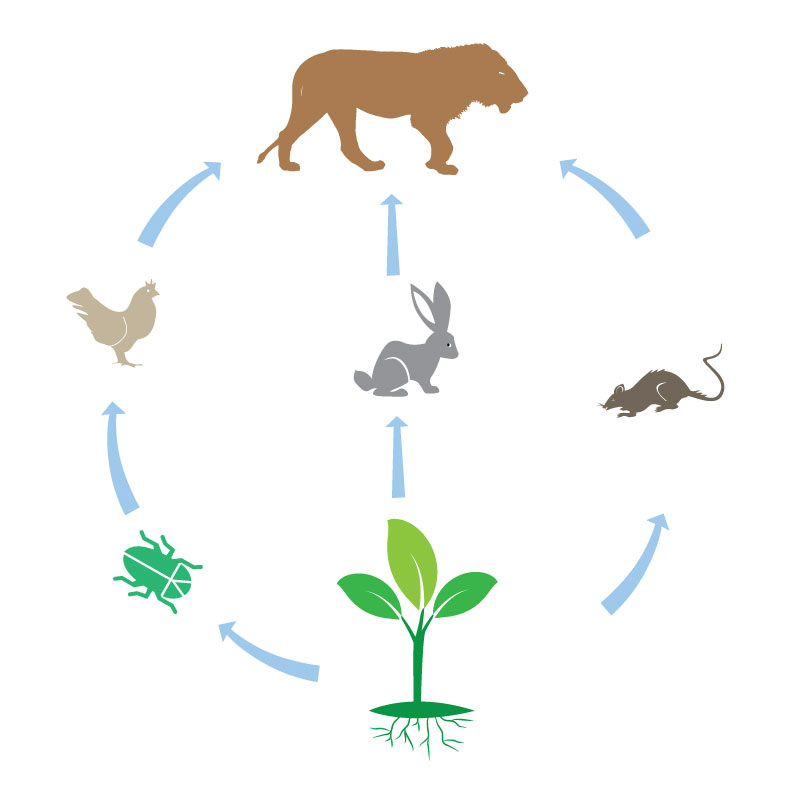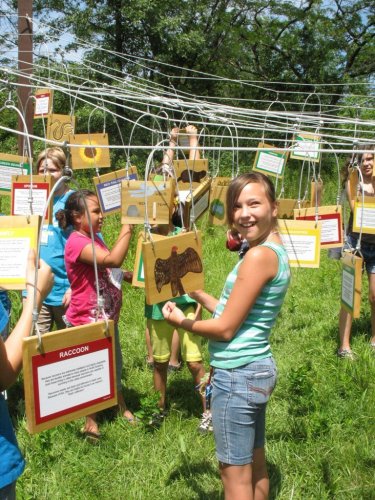
Engage your students in STEM education using “Web of Life” from PLT’s PreK-8 Environmental Education Activity Guide to investigate the interdependence of organisms on Earth.
In this activity, students research a plant or animal of their choice that is found in their local ecosystem. To demonstrate their new knowledge about its link in the web of life, students will create a technology-based learning tool and an accompanying model.

Getting Started: Have each student think about a naturally occurring plant or animal in their area and select one for further investigation. As a group, make sure students choose a variety of plants and animals, including mammals, insects, birds, reptiles, fish, fungi, trees, and other plants. Remind them to avoid domestic animals such as cows, dogs, cats, chickens, etc. After selecting an organism, ask students to work in pairs and discuss their chosen plant or animal, its place within a food web, and relationships with other plants and animals. Refer to your PreK-8 Guide for some guiding questions.
Essential Question: What happens when a plant or animal is removed from a food web?
Task: Students create a documentary and a mobile model that connects their knowledge about how matter and energy is transferred between producers, consumers, and decomposers in a food web. (NGSS: Matter and Energy in Organisms and Ecosystems).
Stem Strategies
Science
It is important for students to understand the difference between a food web and a food chain. To explain these concepts, you might share these video clips from Bill Nye, explaining food webs and Brain Pop, explaining food chains or assign them for homework. You can also refer to your PreK-8 guide for an explanation.
Next, ask students to use the Internet to search for images, videos, and other content to build their knowledge about their chosen organism. BioKIDS is a great place for students to start. Students should collect facts, photos, and video clips to use in a video documentary, game, mobile, or other model.
Technology
To supplement the interactive “Web of Life” activity in the PreK-8 guide, have students use this online food web construction tool as an example. Using this tool, students can drag and drop lines between organisms to show the interactions between species.
 With knowledge about the structure and function of a food web, students can gather information from their individual research and create a video documentary about their organism and its interactions with other species. The video can be created and filmed individually or collectively. Students should be responsible for sharing the role their chosen organism plays in the ecosystem. They could use props, printed pictures, or act out various roles, to accompany their narration. When complete, these learning tools can then be shared with the entire class.
With knowledge about the structure and function of a food web, students can gather information from their individual research and create a video documentary about their organism and its interactions with other species. The video can be created and filmed individually or collectively. Students should be responsible for sharing the role their chosen organism plays in the ecosystem. They could use props, printed pictures, or act out various roles, to accompany their narration. When complete, these learning tools can then be shared with the entire class.
Engineering
Guide students in the creation of a mobile, with each hanging piece representing each of their chosen species. Students can make the pieces proportional in size to their organisms’ importance in the ecosystem. After constructing the mobile, take a close look. Does it balance? Are the pieces arranged to tell the story of your food web?
Consider challenging students to design a solution to replace a key species, if it was ever eliminated from their food web. What are the advantages to protecting the organism versus constructing and implementing the engineered solutions?
Math
Food webs function best when there is an equal balance of all components. Students can apply their math skills to this ecosystem scenario below, which involves balancing appropriate levels of producers and consumers including grass, deer, rabbits, hawks, and bears.
Additional Resources
Don’t have PLT’s PreK-8 Environmental Education Activity Guide?
- Purchase a print guide or e-book, available from PLT.org, Amazon and other places where books are sold.
- Get it through your PLT State Coordinator along with hands-on professional development, alignments to state standards and other state-specific supporting resources.
Don’t consider yourself a formal teacher?
- Check out PLT’s Web of Life family activity. We have 40+ nature activities for families that can be easily used by parents, grandparents, youth group leaders, nature centers, and other nonformal programs.


